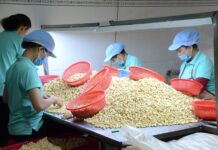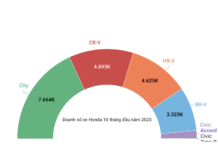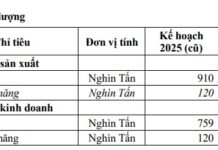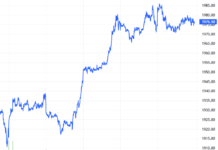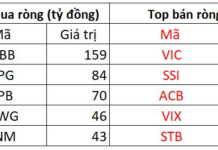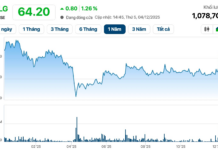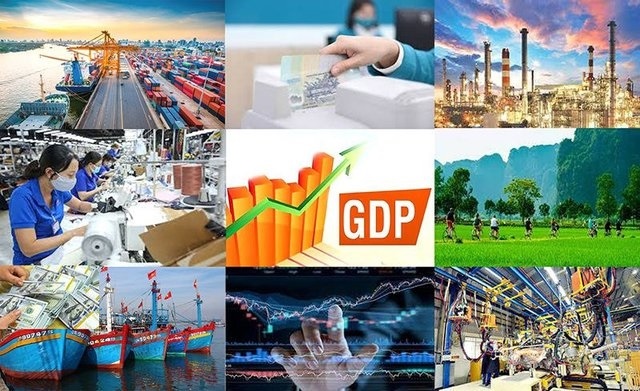
Vietnam aims for an average GDP growth rate of 10% or higher during the 2026-2030 period.
|
The projected five-year socio-economic development plan (2026-2030) encompasses key elements such as: the context for formulating the plan, the overarching objectives, and primary indicators alongside major balances. Notably, Vietnam strives to achieve critical national targets, including an average GDP growth rate of 10% or higher annually from 2026 to 2030, increased GDP per capita, enhanced labor productivity, and a higher proportion of manufacturing and processing industries in the GDP.
The directive outlines several key directives and tasks. These include streamlining administrative procedures, shifting from pre-inspection to post-inspection, and reducing compliance costs for citizens and businesses. Ensuring administrative discipline in public service delivery is also emphasized. Additionally, the plan focuses on refining mechanisms to identify, attract, recruit, and retain talent within government agencies and public institutions.
A new growth model will be established, restructuring the economy and accelerating industrialization and modernization. Science, technology, innovation, and digital transformation will serve as primary drivers, fostering significant breakthroughs. While pursuing rapid growth, sustainability will be prioritized, alongside inflation control, macroeconomic stability, and resource mobilization for development.
Private sector development is positioned as a leading force for growth and innovation. Priority will be given to establishing globally competitive private economic groups, supporting small and medium-sized enterprises, and fostering household businesses and cooperative economies.
Efforts will continue to advance science, technology, innovation, and national digital transformation as outlined in Resolution No. 57 of the Politburo. Breakthrough mechanisms and policies will be implemented, prioritizing resources for science and technology development, particularly in 11 strategic technology sectors.
High-quality human resource development, aligned with international standards, will address the needs of strategic industries and technologies. Education and training quality will be enhanced, fostering comprehensive skills, qualities, and physical well-being among learners. This will be integrated with promoting Vietnamese cultural values and adapting to new requirements. The education system will undergo extensive reforms, focusing on creativity, entrepreneurship, STEM (science, technology, engineering, mathematics), English as a second language in schools, digital skills, and modern technologies.
Synchronized and modern infrastructure development will optimize new development spaces, urban growth, and rural area enhancement. Key priorities include completing the national infrastructure framework (e.g., the North-South eastern expressway, international transshipment seaports, major airports), developing urban rail systems in Hanoi and Ho Chi Minh City, connecting Tan Son Nhat and Long Thanh airports with expressways to achieve 5,000 km of highways. Additionally, construction of two nuclear power plants in Ninh Thuan will resume, targeting completion by December 31, 2030.
Cultural and social development will promote progress and social equity, improving the material, spiritual, and health well-being of the population. Social welfare policies will be innovatively implemented, particularly for veterans, the elderly, children, gender equality, and residents in remote, border, and ethnic minority areas.
National defense and security will be strengthened to maintain social order and safety, ensuring a peaceful environment for national development. The People’s Army and People’s Public Security forces will be built into clean, strong, regular, elite, and modern institutions.
The directive mandates that ministries, central agencies, and localities translate these goals, orientations, and tasks into specific solutions and policies for the 2026-2030 socio-economic development plan. This ensures alignment with the principles and common goals, while considering the practical conditions and development levels of each sector and locality. It also adheres to the list of national key projects proposed in the draft documents for the 14th National Party Congress.
– 08:20 20/10/2025
BAOVIET Bank: Positive Credit Growth in the First Nine Months
With a modern retail banking development strategy deeply rooted in digital transformation, BAOVIET Bank (BAOVIET Bank Joint Stock Commercial Bank) achieved impressive business results in the first nine months of 2025. The bank recorded reasonable credit growth, strengthened risk management efficiency, and positive profit growth compared to the same period last year.
KienlongBank Surges Ahead with Strategic Milestones, Shattering 30-Year Profit Records and Leading Market Momentum
KienlongBank (Kien Long Commercial Joint Stock Bank; UPCoM: KLB) has recently unveiled its Q3 2025 business results, reporting a consolidated pre-tax profit of VND 616 billion. Key performance indicators, including total assets, mobilized capital, and outstanding loans, have all surged significantly, nearing annual targets. This impressive growth underscores the bank’s robust management capabilities and clear strategic direction.
Government Sets Ambitious 10%+ GDP Growth Target for 2026
On the morning of October 15th, the 50th Session of the National Assembly Standing Committee continued with discussions on the Government’s reports. These reports detailed the outcomes of the 2025 socio-economic development plan, the proposed 2026 socio-economic development plan, and the implementation results of the National Assembly’s resolutions on the 2021-2025 five-year plan for socio-economic development and economic restructuring. Vice Chairman of the National Assembly Vũ Hồng Thanh chaired the discussion session.
Deputy Prime Minister Hồ Đức Phớc: “Cashless Payments Are an Irreversible Trend”
Speaking at the “One Touch – A World of Trust” Wave Festival on October 18th, Deputy Prime Minister Ho Duc Phoc emphasized that cashless payments are an inevitable trend of the times, an irreversible step in the journey towards building a modern, safe, and digital green economy.

